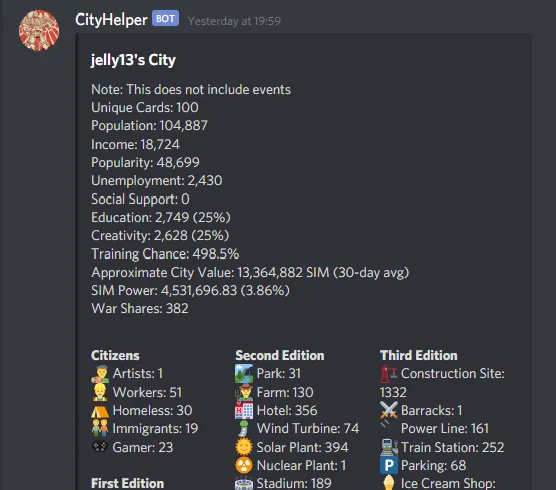You do not need to read the full book to start playing dCity - a blockchain town building game with real asset ownership around a 100k USD reward pool (@dcityrewards).
However, you will need five extra minutes if you do not have a Hive blockchain account yet. There is an excellent post explaining how to claim yours for free. Totally worth it as it opens many more doors - not just gaming.
Can You Read This Later?
I do not think you can. You probably said that to yourself when confronted with the full-sized manual explaining the changes to seasoned players. I do not blame you for that. My own city has 100 different cards in it. Noone says your dCity should.

The short story is: Third Edition is about Combine (useful for big cities) and Load (useful if you have collected a lot of citizens over the time). With a new city, you really do not have to pay as much atttention to it as it happened with Second Edition that introduced Education and Creativity. That made the card selection pretty wide considering a few directions you could take.
Third Edition surely has hot stuff due to Combine (Office, Power Line, Parking) and Load (Warehouse, Prison, SpaceSIM Company) but few cards have specific mechanics attached to them. Moreover, Fire Department is the only one that introduces a new one (savings when a specific crisis hits) while the rest just replace cards that have gone out of print (Court for Police Station) or will go out of print next (Military Base for Military Industrial Complex).
The List
None of these make my list actually. My top three, alphabetically, consists of:
- Barber Shop
- Ice Cream Shop
- Music Store
There is no good way to sort them. Why? They all have the same attributes: Income: 8, Popularity: +7, Workers required: 3
They are not all identical (the use in Combine varies and may vary even more later). What sets them apart is the current market price. You have probably heard of P/E Ratio of stocks. You can qutie easily compute P/E for dCity cards dividing the market price by the Income written right on the card. I am not saying you can take it all home as the taxes and stuff needs to be factored in. The sweet part is, as a method for comparison across the cards, P/E works even better in dCity than stock market. Stock P/E is not much comparable across industries but the dCity fees are the same regardless the cards involved.
The reason for the performance of these cards is fundamental. Big cities hate these. Big cities struggle with unemployment and the card adds too much popularity for the number of jobs it creates. It is a prime example of a Workforce card beating even Forest from Second Edition. Big money has to avoid it, small dCities can enjoy the high Income/Jobs ratio.
Starting Your dCity in Five Minutes
Some people say you should buy five random cards to start and look around for supplements to balance the population. I would advise you to go to the market to check out Barber Shop, Ice Cream Shop and Music Store. Most likely, you will prefer NFTMart which has more intuitive layout than the official UI that is more appealing to seasoned players/traders. Grab a handful of whatever is currently least expensive of the three and start adding population while watching your employment numbers. If you want to be fancy, toss in a few Parks to round up your popularity to 50 or 100 for improved citizen mining.
If you run a bigger city and feel you did not learn much here today, just list your Shops on the market right now and reblog the post to make people take it off your hands.
